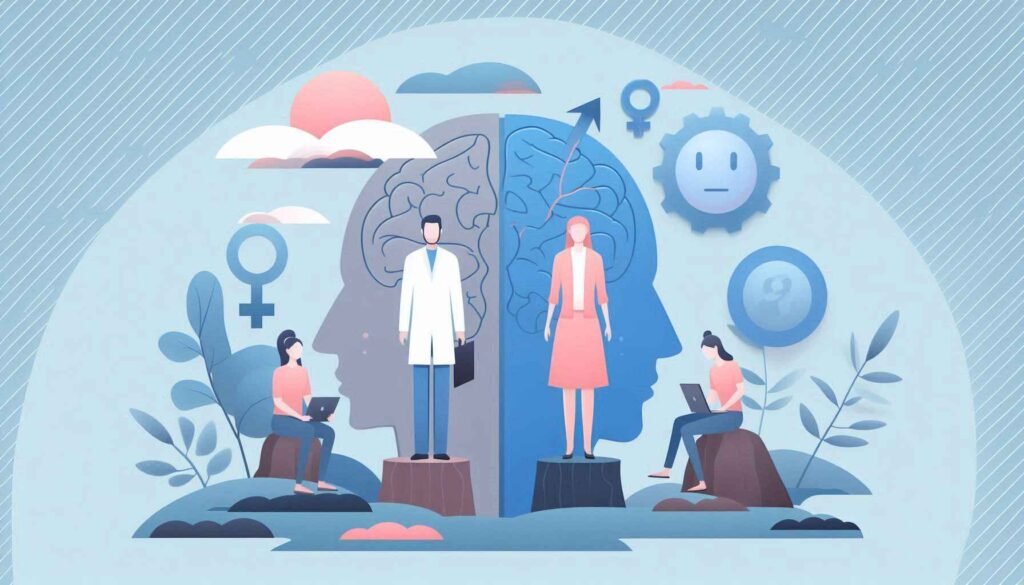
Emerging Mental Health Policy Trends: How They Shape the Future of Care
The Growing Importance of Mental Health in Policy Discussions
Mental health is no longer sidelined in healthcare policy. Today, it takes center stage in conversations about societal well-being and economic stability. This shift reflects a broader understanding that mental health is deeply interconnected with physical health and productivity.
1. Mental Health as a Public Health Priority
Recent trends highlight a push to prioritize mental health at the same level as physical health. Governments worldwide are allocating more funding toward mental health services, integrating these into public health initiatives, and expanding access to care.
- Key focus: Tackling stigma through public awareness campaigns.
- Impact: Destigmatization encourages people to seek help earlier, improving outcomes and reducing long-term costs.
2. Expansion of Universal Mental Health Coverage
Many countries are now incorporating mental health services into universal healthcare plans. This ensures that individuals from all socioeconomic backgrounds can access critical care. Policies such as these aim to:
- Provide equitable access to therapy and counseling.
- Cover medication costs for mental health conditions.
- Reduce barriers for underserved populations.
3. Integrating Mental Health into Primary Healthcare
One of the most promising trends is the integration of mental health services into primary care settings. By training primary care physicians to recognize and treat mental health conditions, policymakers aim to:
- Improve early detection of issues like anxiety and depression.
- Streamline referrals to specialized care.
- Reduce the burden on overstretched mental health specialists.
The Role of Technology in Mental Health Policy
Technology has become a game-changer in the delivery of mental health services, and policymakers are recognizing its potential to expand access and improve outcomes.
4. The Rise of Telehealth in Mental Health Care
The COVID-19 pandemic accelerated the adoption of telehealth for mental health services. Governments are now embedding telehealth provisions into long-term policies.
- Benefits: Convenient access to therapy, especially for rural populations.
- Challenges: Ensuring data privacy and addressing the digital divide.
5. Focus on Digital Mental Health Tools
Apps and online platforms designed to support mental well-being are becoming a part of public health strategies.
- Examples: Cognitive Behavioral Therapy (CBT) apps, meditation guides, and crisis hotlines.
- Policy goals: Regulate these tools for efficacy and safety while encouraging innovation.
6. Data-Driven Decision Making
Policymakers are leveraging data to shape mental health strategies. Digital tools and electronic health records provide valuable insights into:
- Population-level mental health trends.
- Treatment efficacy and areas for improvement.
Shifting the Focus to Prevention and Early Intervention
Another significant policy trend is a greater emphasis on preventing mental health conditions before they escalate.
7. School-Based Mental Health Programs
Recognizing the critical role of early intervention, many policies focus on embedding mental health education and services into school systems.
- Goals: Teach coping skills, identify at-risk students, and provide on-site counseling.
- Outcome: Better emotional resilience and academic performance among students.
8. Workplace Mental Health Initiatives
Workplaces are increasingly seen as key players in supporting mental health. Government-backed policies encourage or mandate:
- Employee assistance programs (EAPs).
- Mental health training for managers.
- Flexible work options to support well-being.
9. Addressing Social Determinants of Mental Health
Policymakers are tackling issues like poverty, housing instability, and discrimination that significantly impact mental health.
- Initiatives include: Affordable housing projects, anti-discrimination laws, and community support programs.
- Why it matters: Addressing root causes reduces the prevalence of mental health conditions.
merging Mental Health Policy Trends: How They Shape the Future of Care
The landscape of mental health policy continues to evolve, reflecting the urgency of addressing mental health challenges on a societal level. In this second half of the blog, we delve into the policies promoting equity, innovation, and collaboration across sectors, as well as their transformative potential.
Promoting Equity in Mental Health Access and Care
10. Bridging the Gap for Marginalized Communities
Policymakers recognize the disproportionate impact of mental health issues on marginalized groups, including racial minorities, LGBTQ+ individuals, and low-income populations. Recent efforts focus on:
- Expanding culturally competent care tailored to diverse communities.
- Increasing the number of bilingual mental health professionals.
- Providing free or low-cost services to underserved populations.
Why this matters: Addressing disparities ensures that mental health services are accessible and effective for all, creating a more equitable system.
11. Prioritizing Youth Mental Health
Youth mental health has gained significant attention as policymakers seek to combat rising rates of anxiety, depression, and suicidal ideation among younger populations. Key initiatives include:
- Increased funding for school counselors and psychologists.
- Mandatory mental health curricula in schools.
- Crisis intervention programs specifically designed for adolescents.
Impact: Early intervention can prevent long-term mental health issues, setting young people on a path toward well-being.
Collaborative Approaches in Mental Health Policy
12. Public-Private Partnerships
Collaboration between governments, non-profits, and private organizations has become a cornerstone of effective mental health policy.
- Examples: Partnerships to fund community mental health centers, corporate sponsorship of mental health awareness campaigns, and tech companies developing innovative solutions.
- Outcome: Shared resources and expertise amplify the impact of mental health initiatives.
13. Global Cooperation for Mental Health
Mental health challenges transcend borders, prompting international cooperation to address shared concerns.
- Initiatives like the World Health Organization’s mental health action plans guide global strategies.
- Cross-border collaborations provide resources and training for countries with limited mental health infrastructure.
Significance: Global efforts promote knowledge sharing and set universal standards for mental health care.
14. Community-Based Mental Health Support
Community-driven approaches are gaining traction, as they empower local organizations to address mental health issues within their contexts.
- Establishing peer support networks.
- Training community leaders to recognize and respond to mental health crises.
- Promoting mental health education tailored to cultural norms.
Benefits: Community-based models enhance trust, accessibility, and effectiveness, especially in rural or underserved areas.
Advancing Innovation in Mental Health Care Delivery
15. Personalized Mental Health Care
Emerging technologies enable personalized mental health care tailored to an individual’s unique needs.
- Using artificial intelligence to analyze behavioral patterns and predict risks.
- Developing personalized treatment plans based on genetic testing.
Why this is groundbreaking: Personalized approaches improve treatment outcomes and reduce trial-and-error in care.
16. Virtual Reality (VR) in Therapy
Virtual reality is revolutionizing exposure therapy for conditions like PTSD and phobias. Policymakers are incorporating VR into approved treatment methods.
- Simulated environments allow individuals to confront fears safely.
- VR tools provide cost-effective therapy options for widespread use.
Future potential: Expanding VR therapy can make specialized treatments more accessible and efficient.
17. Artificial Intelligence and Machine Learning
AI-powered chatbots and diagnostic tools are becoming integral to mental health care. Policies are emerging to regulate these innovations, ensuring their safety and reliability.
- Chatbots provide round-the-clock mental health support.
- Machine learning tools identify patterns in large datasets to inform policy decisions.
Challenges: Balancing innovation with ethical concerns and safeguarding data privacy.
Workforce Development in Mental Health
18. Addressing the Mental Health Workforce Shortage
A critical focus of mental health policy is tackling the shortage of qualified professionals. Efforts include:
- Increasing funding for mental health training programs.
- Offering scholarships and loan forgiveness for mental health professionals.
- Streamlining licensing processes to expand the workforce quickly.
Impact: A robust workforce ensures timely and effective care for individuals in need.
19. Supporting Mental Health Professionals
Recognizing the high levels of burnout among mental health workers, policymakers are investing in programs to support their well-being.
- Initiatives include regular mental health check-ins, reduced workloads, and access to peer support groups.
- Financial incentives such as hazard pay for working in high-stress environments.
Significance: A healthy, supported workforce is better equipped to deliver high-quality care.
Addressing Emerging Mental Health Concerns
20. Policies for Post-Pandemic Mental Health
The COVID-19 pandemic revealed gaps in mental health care systems worldwide, prompting the development of policies to address lingering effects.
- Expanding teletherapy access and digital tools.
- Funding research into the long-term mental health effects of the pandemic.
- Supporting those disproportionately affected, including healthcare workers and those experiencing grief.
Outlook: These policies aim to build resilience and prepare for future public health crises.
21. Tackling Substance Abuse and Mental Health Dual Diagnoses
Many individuals face co-occurring mental health and substance abuse issues. Policies are increasingly addressing these dual diagnoses with integrated care models.
- Coordinated treatment plans that address both conditions simultaneously.
- Training professionals in dual-diagnosis care.
Outcome: Improved recovery rates and reduced societal costs.
Building Sustainable Mental Health Policies
22. Long-Term Funding for Mental Health Programs
One of the most critical factors in the success of mental health policies is sustained funding. Short-term programs often lack the resources to create a lasting impact. To address this, policymakers are:
- Securing multi-year funding commitments from governments and private organizations.
- Prioritizing mental health spending as a core component of healthcare budgets.
- Encouraging donations and investments from corporations and philanthropists.
Impact: Reliable funding ensures consistent access to mental health services and allows programs to evolve with changing needs.
23. Environmental Sustainability and Mental Health
Environmental factors, such as climate change and urbanization, are increasingly linked to mental health. Policymakers are incorporating environmental considerations into mental health strategies.
- Creating green spaces in urban areas to promote mental well-being.
- Supporting research on the mental health impacts of climate change.
- Developing disaster response frameworks that include psychological support.
Why this matters: A holistic approach recognizes that mental health is influenced by the environment and takes proactive steps to address these connections.
Fostering Community Resilience
24. Strengthening Local Support Networks
Community resilience plays a vital role in mental health. Policies that empower local organizations to provide mental health resources are gaining traction.
- Training volunteers as mental health first responders.
- Funding local nonprofits to expand their mental health outreach.
- Establishing community centers that provide free mental health services.
Benefits: Strengthened community networks create a safety net for individuals, reducing the burden on larger healthcare systems.
25. Promoting Peer Support Programs
Peer support is increasingly recognized as an effective tool for mental health care. Policymakers are incorporating peer-led programs into their strategies.
- Recruiting individuals with lived mental health experiences to provide support.
- Offering training and certification for peer support specialists.
- Integrating peer support into larger healthcare systems.
Impact: Peer support fosters a sense of understanding and belonging, encouraging individuals to seek help without fear of judgment.
26. Enhancing Crisis Response Systems
Mental health crises require immediate and effective responses. Policymakers are improving crisis response systems to ensure timely care.
- Expanding 24/7 crisis hotlines staffed by trained professionals.
- Increasing the availability of mobile crisis units for on-site intervention.
- Collaborating with law enforcement to ensure that responses prioritize mental health care over criminalization.
Outcome: Enhanced crisis response systems save lives and reduce the long-term impact of mental health emergencies.
Future Trends in Mental Health Policy
27. Policy Integration with Physical Health Care
The integration of mental and physical health is a growing priority. Policymakers are working to break down silos between the two, ensuring holistic care.
- Co-locating mental health services in general healthcare facilities.
- Training all healthcare providers to address mental health as part of routine care.
- Developing treatment plans that account for both physical and mental health needs.
Why it’s essential: Treating the whole person leads to better health outcomes and reduces the stigma of seeking mental health care.
28. Addressing the Impact of Social Media on Mental Health
Social media’s role in mental health is complex, with both positive and negative impacts. Policymakers are developing strategies to mitigate harm while amplifying benefits.
- Introducing regulations to combat cyberbullying and harmful content.
- Promoting campaigns that use social media to spread mental health awareness.
- Encouraging tech companies to prioritize user well-being through platform design.
Future potential: Thoughtful policies can harness the power of social media to support mental health instead of harming it.
Challenges in Implementing Mental Health Policies
29. Overcoming Stigma at Policy Levels
Despite progress, stigma remains a significant barrier to effective mental health policies. Policymakers face the challenge of addressing misconceptions and biases.
- Incorporating anti-stigma education into public health campaigns.
- Normalizing discussions about mental health in government and corporate settings.
- Engaging influential leaders to advocate for mental health awareness.
Goal: A society where mental health is treated with the same urgency and importance as physical health.
30. Balancing Innovation with Regulation
While technological advances promise to revolutionize mental health care, they also raise ethical and regulatory concerns. Policymakers must navigate these challenges carefully.
- Ensuring that AI tools and mental health apps meet rigorous safety standards.
- Balancing patient privacy with the need for data collection to improve care.
- Addressing inequalities in access to digital health tools.
Outcome: Policies that foster innovation while protecting individuals’ rights and well-being.
Empowering the Next Generation of Mental Health Advocates
31. Educating and Engaging Youth
Youth advocacy is crucial for the future of mental health policy. Policymakers are implementing programs that empower young people to become active participants in shaping mental health initiatives.
- Introducing mental health leadership programs in schools and colleges.
- Encouraging youth participation in policy-making forums.
- Providing platforms for young advocates to share their perspectives.
Why this is key: Engaging the next generation ensures that mental health policies remain relevant and responsive to evolving needs.
32. Supporting Research and Innovation
The future of mental health care relies on continuous research and innovation. Policymakers are investing in:
- Long-term studies on the effectiveness of emerging treatments.
- Grants for researchers exploring novel approaches to mental health care.
- Collaborations between academia, government, and the private sector.
Impact: Research-driven policies improve care quality and effectiveness, benefiting individuals and communities alike.



